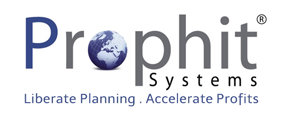PROPHIT SYSTEMS ANNOUNCES U.S. LAUNCH
PRESS RELEASE
APAC Supply Chain Solutions Leader PROPHIT SYSTEMS ANNOUNCES U.S. LAUNCH
Prophit® Systems Pty Ltd the innovative leader of Supply Chain Software that makes complex supply chains simple, officially opens for business in the United States. First stop Atlanta.

Prophit® Systems – Atlanta
3333 Piedmont Road,
Suite 2050
Atlanta, GA 30305
PROPHIT SYSTEMS to help SMBs Simplify, Automate and Optimize Supply Chains
Prophit® Systems is thrilled to bring its proven solutions that help manufacturers improve supply chain visibility, streamline the S&OP process and ultimately increase profits to the U.S. market.
“Our success through APAC has been founded on our belief that our systems must simplify and amplify our customers planning process. The speed with which we implement our skin in the game approach and the profound, tangible business value each of our projects deliver has redefined the Supply Chain planning space in APAC.
We are delighted at the demand for our products and services here in the U.S. We are seeing deep interest from the mid-market manufacturers whom have been looking for a solution provider that they can trust to work with them to deliver outstanding results immediately. “ Tim Gray, Managing Director, Prophit Systems.
Prophit® Systems has been actively working behind the scenes for some time, with U.S. subsidiaries and their APAC suppliers, talking to market participants and collaborating with international partners. The company’s exceptional reputation has already gained the attention of the U.S. market, particularly within specific industries such as the Packaging Manufacturing, Dairy Processing and CPG manufacturing.
Leading manufacturers such as Amcor, Visy / Pratt Industries and Browns Dairy (formerly Fonterra) use Prophit® Systems for Forecasting, Capacity Planning, network optimization, inventory optimization, Scheduling, Sequencing, replenishment optimization and shop floor control.
Our commitment to the U.S. market is steadfast and further expansion plans are already underway with more Prophit® Systems locations within the next year.
The launch of the Prophit® Systems Atlanta branch follows the decisive investment into their global expansion strategy. The China Office was launched in early 2015 and we have established implementation partners to distribute Prophit® in Europe. The growth of Prophit® Systems international operations, particularly within the North American region has gained attention and is already being championed by local clients within the United States with significant strategic partner arrangements being confirmed.
ABOUT PROPHIT SYSTEMS – www.ProphitSystems.com
Prophit® Systems is an international Supply Chain software and consulting company headquartered in Sydney Australia. It provides “best of breed” supply chain software to manufacturers with highly complicated supply chain processes. With over two decades experience in the Supply Chain and manufacturing industry, Prophit® Systems consistently delivers a 100% ROI in under 12 months from implementation. The product range is designed to optimize all aspects of an organization’s supply chain and to allow them to fully capitalize on their ERP investment. Prophit® Systems is already the largest supply chain software provider within the APAC region and plans to also become one of the top providers within the North American market.
PRESS RELEASE APAC Supply Chain Solutions Leader PROPHIT SYSTEMS ANNOUNCES U.S. LAUNCH Prophit® Systems Pty Ltd the innovative leader of Supply Chain Software that makes complex supply chains simple, officially opens for business in the United States. First stop Atlanta. Prophit® Systems – Atlanta 3333 Piedmont Road, […]
Read More...










